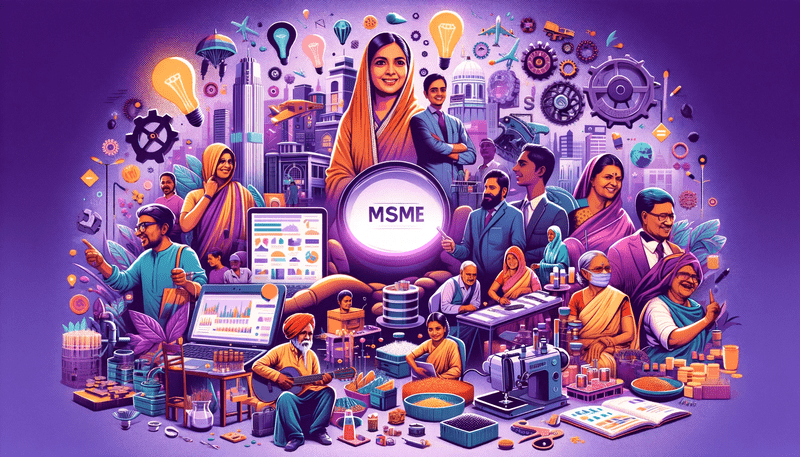The Union Budget of 2023 has been hailed as pro people and pro market – but will the budget of 2024 raise the bar?
The Union Budget of 2024 is a comprehensive exposition which aims at leveraging technology, improving productivity, and enhancing market efficiency promoting an all-inclusive and robust economy.
In 2014, the Modi government exulted ‘Vikas’. In 2024, this took the form of ‘Sabka Saath, Sabka Vikas’. The union budgets over the years have been designed in a manner so as to reduce fiscal deficit, improve employment rates and create a sustainable ecosystem for agriculture. India’s recent sustained growth at 7%, its highly distributed production capacity and a sizable economy have made the prospect of Viksit Bharat@2047 seem commendable and achievable. The Budget then becomes a place to have benchmarks of growth to assess our progress and not a place to make long-term forecasts. Union Budget 2024 comes with an aspirational feel. It has focussed on four pillars: Garib (poor), Mahilayen (women), Yuva (youth) and Annadata (farmers). It also sought the reduction of the fiscal deficit from the current 4.9% to 4.5% of the GDP. To do this, they have prioritised the growth and development of the MSMEs – those enterprises that contribute 30% to the nation’s GDP, 40% to exports and 110 million people to employment.

What are the MSMEs?
MSME stands for micro, small and medium enterprises. These businesses are defined by their capital investment within the manufacturing unit, machinery and other equipment’s as well as their annual turnover. These MSMEs have a crucial role towards economic growth, creation of employment and significantly affecting the exports and GDP of the nation. This Budget rewrote the ceiling amounts for enterprises to be classified as MSMEs. They are mentioned in the table below.

While the MSMEs hold the power to shape the economy in myriad ways, the government in the Budget of 2024 improves the MUDRA (Micro Units Development And Refinance Agency) loan scheme aimed to provide the non- corporate informal sector with institutionalised loans.
Due to weak collateral faculty, faulty accounting records, and information asymmetry, the administrative cost of lending loans to MSMEs is comparatively higher. Thus, institutions do not find it profitable to lend loans to the MSMEs. This leads them to ask for loans from the loan sharks who exploit them by charging illegal and higher interest rates.
The Budget of 2024 led to a reform within the MUDRA loan scheme which does not require any sort of collateral, originally comprised 3 loan types mentioned in the table below:

The government has also extended the limit of loans from ₹ 10 Lakh to ₹ 20 Lakh to those who have already availed the MUDRA loans and have successfully paid it. This feature intends for the inclusive growth of the economy. The banks who provide these interest loans are directed by the RBI to charge between 1% and 12% yearly and to calculate it basis the base rate.
Even though this development assists the MSMEs, the fear that these businesses would not be able to repay these borrowings was a predicament. This led to the release of a new scheme, the Credit Guaran
Credit Guarantee Scheme
The Credit Guarantee Scheme assures the money lending institutions some money to mitigate a portion of the loss in case the MSMEs default, reducing the risk to the lender. This Credit Guarantee scheme encourages both the lender and the borrower to give and ask for loans due to the intervention of the third party that promises to cover a portion of the loss in the worst-case scenario.
The Credit Guarantee Fund Trust has covered over 67 lakh beneficiaries in the first 22 years of its existence and has had a positive impact on six major areas in the MSME sector i.e., technology upgradation, market development, sustainability of the scheme, economic impact, and social impact. During January-November 2023, 12.50 lakh guarantees were approved, amounting to ₹ 1.46 Lakh Cr. The cushioning against defaulting has created a sense of security in transactional dealings which has bolstered investor confidence. However, should these enterprises declare themselves bankrupt, the Indian Bankruptcy Code (IBC) has strategic provisions to cater to the same.
The Prime Minister Employment Generation Programme
Since its inception in 2008, and until 30 November 2023, over 9.29 Lakh micro-enterprises have been supported across the country with the disbursement of a Margin Money subsidy of ₹ 34,517 Cr, generating a total estimated employment for around 78.36 Lakh persons.
Raising and accelerating MSME Performance a world bank assisted scheme aims at connecting MSMEs to the global market. An outlay of ₹ 6,000 Cr has been assigned for five years to ensure the implementation. The scheme aims to benefit over 5.5 Lakh MSMEs.
These numbers evidently display how deeply the government has invested within the MSMEs due to significant effects of an inclusive economy, advancing exports, reduction in the fiscal debt and employment generation.
PM Narendra Modi stated that the budget of 2024 is a crucial component of the Amrit Kaal as it will establish the base for developed India of 2047, therefore it requires us to have a steady growth of 7% year-on-year.

Conclusion:
The Financial support announcements for the MSMEs have led to a positive impact on the small and medium enterprises, they have been encouraged to take up loans from institutionalised lenders along with the assurance that in case they default a third party will cover a portion of the loss, they do not have to provide a collateral for these loans.
The budget has laid emphasis on the particular topic of growth through inclusivity therefore, boosting the MSME manufacturing sector for advancement in the exports, growth in employment and inclusive economic growth, following the idea of “Swadeshi”.
Written by – Aadit Parmar
Edited by – Zainab Kazi




